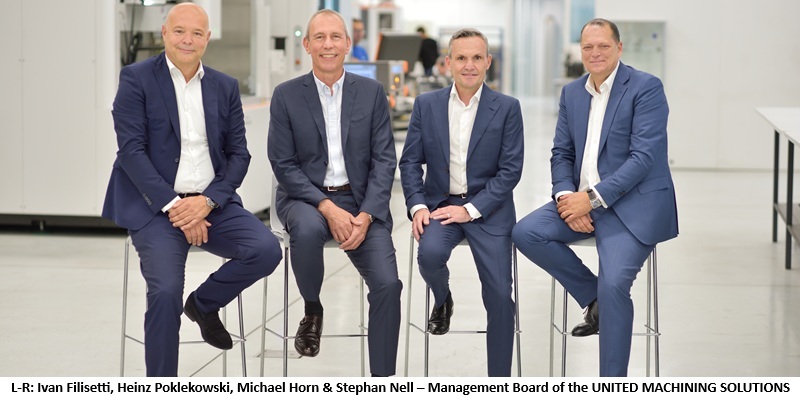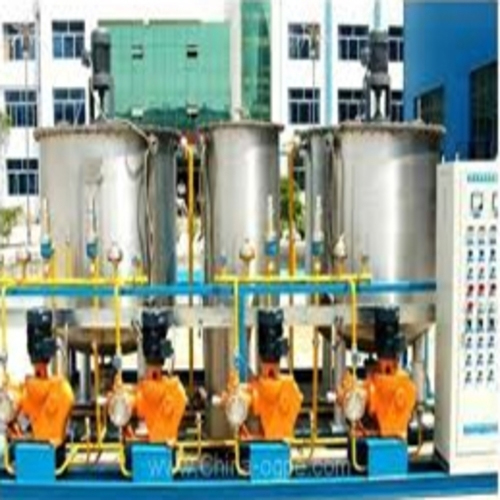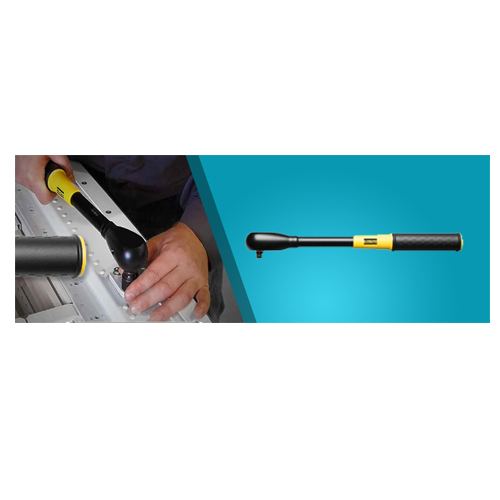Schedule a Call Back
Smart laser cutting
 Technical Articles
Technical Articles- Dec 01,16

The Salvagnini L5 laser cutting system integrated into the FlexCell FMC offers innovations and automation solutions in line with the Industry 4.0.
Like all the other solutions showcased by Salvagnini in Hanover, the L5 laser cutting system demonstrates its ability to handle information collected in the field in the best possible way in order to react to input in real time, thus becoming inherently smart and making its use simpler and more efficient.
The L5 cutting system, presented as an integrated part of the FlexCell, incorporates a series of important industrialisation-oriented upgrades and improvements stemming from everyday experience gained with the numerous installations carried out by Salvagnini each year. A series of upgrades that have upped the performance and reliability of this cutting system, even when it comes to unmanned use as part of an FMC, such as the FlexCell it has been integrated into. Indeed, improvements have gone beyond the machine proper, extending to the automation that it can be teamed with, which is something of a new development in this specific case.
The system was shown at EuroBLECH in October with a 4 kW fibre laser source, which is not the most powerful option in the catalogue for Salvagnini lasers (ranging from 2 to 6 kW), but represents a winning compromise for a highly productive and efficient solution.
Truly 4.0-compliant laser cutting
“L5 stands out for the reliability of certain solutions that are now considered standard features, such as the new compass structure with advanced kinematic system and the Dry Cooling cutting head with gas- and water-free optics cooling” explains Pierandrea Bello, Salvagnini Product Manager, adding: “Via the compass, the system can achieve dynamics with acceleration as high as 5 g, increasing productivity while keeping consumption and running costs down to very low levels. The latest generation Dry Cooling cutting head also plays a part in achieving these results as there is no need to set up a supply of gas or water of any kind for cooling the cutting optics, which thus reduces consumption and, at the same time, significantly increases cutting reliability and the optics' service life.”
“With a view to making this cutting system even smarter, we have worked intensively on all those auxiliary functions surrounding the cutting operation. This has involved applying new features and improvements to the automated devices, too, making the laser cutting system an ideal candidate for Industry 4.0” Bello goes on to explain. "For instance, we have the automatic nozzle change and the process control, which has been further improved with a view to improving cutting efficiency and reducing waste to zero.”
“Today, the machine can recognise when it is not cutting correctly, stop cutting quickly to correct the relevant parameters and resume work from where it left off, even managing to salvage that part, which would otherwise have ended up as scrap. In practice, it stops and resumes cutting at the exact same point where it stopped, but with the parameters now optimised.
In the event the same cutting problem is encountered twice more, the L5 system can decide on its own to adopt the optimised parameters as the new cutting standard to complete the cycle in the best possible way. So APC (Adaptive Process Control) qualifies as a truly smart process management system that joins the features already present for improved initial piercing when cutting medium-heavy thicknesses as well as improved material use. Being able to make smaller and more precise piercings actually means they can be positioned closer to the cutting edges.”
The AVS artificial vision system also benefits from enhanced capabilities as a result of a breakthrough evolution. The use of the camera brings with it numerous advantages, such as the ability to align the edges of the blank quickly (approx 6s) or to take details already produced on the sheet as cutting references, without any restrictions on shape, or even to recover offcuts and use them, regardless of their shape, as the starting format for new nesting patterns. Its use has now been further refined: whereas before it centred on holes – of any shape, but only on holes – it now also centres on shapes marked or engraved on the surface of the blank, and this means the system's range of possible applications has been extended.
On-the-fly trajectories have also been optimised further. At EuroBLECH, Salvagnini presented OnFly 4.0, the new "on the fly" cutting system, integrated into the Salvagnini Six controller, featuring new, refined control of acceleration on entering and leaving each cutting segment, which results in even shorter cutting times.
Loading now also comes in "smart"
The L5 system integrated into FlexCell is teamed with an entirely new compact longitudinal automation solution comprising a grip unit and a rake that are an integral part of the structure and allow cutting to take place between the machine's pallet change unit and the external area.
“Known as ADLL, this automation solution features all those devices and little details stemming from experience gained with numerous unmanned installations, such as the so-called "belts" applied to the rake to reduce any scraping on the cut parts and to improve stacking quality, or the brushes for cleaning the tips of the grids with each cycle” Pierandrea Bello goes on to say.
“The same thing goes for MCL, the cartesian part separation system, one of the "jewels" in Salvagnini's crown of full-automation installations. MCL, with its functional features and the automatic integrated management of all the stacking stages, proves a winning solution for a whole range of different applications. Again, MCL is being presented in a new improved version with a series of devices to boost the system's already enviable reliability. Worth noting, for instance, is the "blower" designed to blow off the little bits of scrap that sit on the newly cut sheet, before it is picked up, and that are often responsible for critical situations during operations downline.”
“But that is not all. With a view to facilitating operations downline from the cutting process, we will give the option of stacking work-in-process on a fixed station or on a number of trolleys that, in practice, can then be removed quickly so even batch-one parts can be carried to the machines where their processing will be completed. This potential scenario is not a showpiece we have dreamt up for Hanover: it closely resembles many of the actual installations we have carried out recently.”
“Right in front of MCL, we will be presenting a control panel with resident OPS-SFC (Shop Floor Control): this Salvagnini software application "connects" the laser system to the bending systems within the FlexCell cell set up in our exhibition space. Via this panel, the operator can interact with the system and is guided in picking up the parts that are to be carried to the downline systems based on what these machines actually need next.”
Many customers choose the cartesian solution for unloading single parts, but still want to be able to route the cut parts where they are needed without having to stop the machine, and hence this trolley solution is ideal.
Related Stories

Unequal wealth distribution: The natural outcome in an industrial society
It is evident that distribution of wealth is a generic phenomenon, with no group or individual holding the reigns. It is as natural as democracy is, says R Jayaraman.
Read more
UNITED GRINDING and GF Machining merge to form UNITED MACHINING SOLUTIONS
The new entity will be one of the world's largest machine tool manufacturers with $ 1.5 billion in sales.
Read more
Kinetic Communications opens automated controller manufacturing line in Pune
The new advanced automated controller line in Pune leverages Industry 4.0 technology to drive high-speed, precision manufacturing for next-generation smart EV electronics.
Read moreRelated Products

Ozone System
Omnicorp Environs & Infratech Co offers a wide range of ozone systems.

SWR ’Slipping’ Wrenches
Reliable
Trade Links offers a wide range of SWR ’slipping’ wrenches.

Gripping Systems – Rgg
Schunk Intec India Pvt Ltd offers a wide range of Gripping Systems – RGG - cleaning
device with shank interface.














